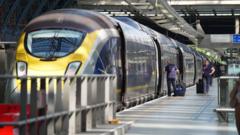Amidst the bustling streets of Amsterdam, the debate over helmet use for cyclists continues to spark discussions on safety versus cultural identity. In a recent incident, Fallon Albrecht, a 39-year-old cyclist, pedaled through one of the city’s busiest intersections without a helmet. When asked about her choice, she attributed her decision not to wear one to her hairstyle. “Because of my bun,” she said, candidly referencing her high hair knot.
New statistics released by the Dutch Central Bureau for Statistics reveal sobering data; cyclists had the highest annual fatalities among road users in the Netherlands last year, with 246 deaths compared to 220 for car occupants and 59 pedestrians. On average, since 2000, the country has witnessed 199 cyclist fatalities annually. Alarmingly, nearly two-thirds of these deaths in recent years were due to head injuries, underscoring the need for public awareness on road safety.
In a nation where cycling is deeply entrenched in daily life, the question remains: how can the Netherlands balance its love for cycling with the pressing need for safety? With a myriad of perspectives at play, the conversation surrounding helmet use is expected to evolve as more people consider the implications of their choices on the roads.
New statistics released by the Dutch Central Bureau for Statistics reveal sobering data; cyclists had the highest annual fatalities among road users in the Netherlands last year, with 246 deaths compared to 220 for car occupants and 59 pedestrians. On average, since 2000, the country has witnessed 199 cyclist fatalities annually. Alarmingly, nearly two-thirds of these deaths in recent years were due to head injuries, underscoring the need for public awareness on road safety.
In a nation where cycling is deeply entrenched in daily life, the question remains: how can the Netherlands balance its love for cycling with the pressing need for safety? With a myriad of perspectives at play, the conversation surrounding helmet use is expected to evolve as more people consider the implications of their choices on the roads.





















